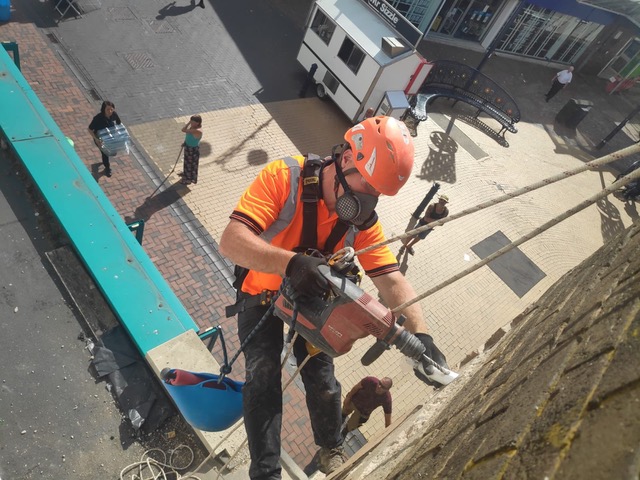Chloride sampling is mainly carried out on reinforced concrete using test methods described in BS 1881*.
Chloride can be present in the concrete either as added calcium chloride which was used to accelerate the setting time of the concrete or as a contaminant of the aggregate. Post-construction contamination can subsequently permeate the concrete.
The chloride ions can diffuse through concrete pores in solution form and attack the passive layer protecting the steel reinforcement leading to corrosion.
In chloride contaminated concrete, the chloride concentration is determined at various depths to determine the likelihood of corrosion of the reinforcing steel, the chloride profile of the concrete is determined by taking dust samples from the following increments of depth.
- 5 to 25 mm
- 25 to 50 mm
- 50 to 75 mm
- etc.
The first 5 mm of drilled concrete is normally discarded as being non-representative. Sample increments should relate to the determined location of the steel reinforcement.
A single Chloride dust sample can also be obtained whilst undertaking Carbonation Testing.
*BS 1881 describes the sampling procedures, treatment of samples, and analytical methods to be used on a sample of concrete to determine the cement content, aggregate content, aggregate grading, original water content, type of cement, type of aggregate, chloride content, sulphate content, and alkali content.

